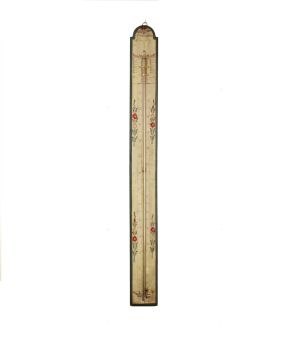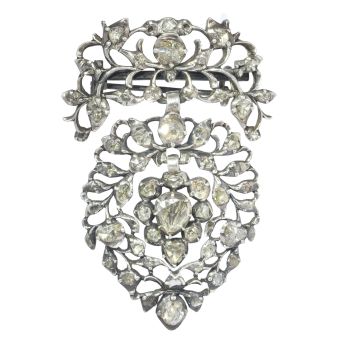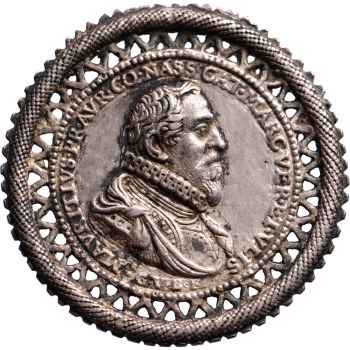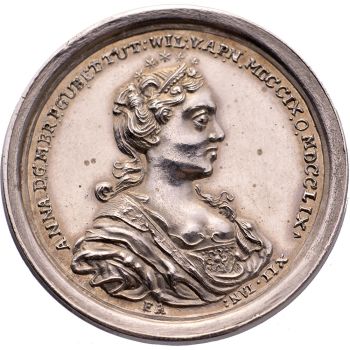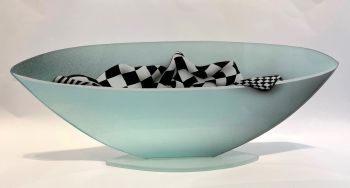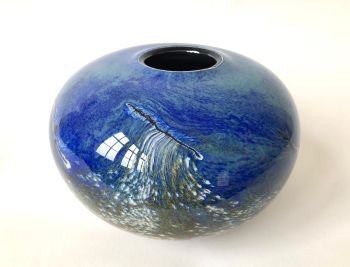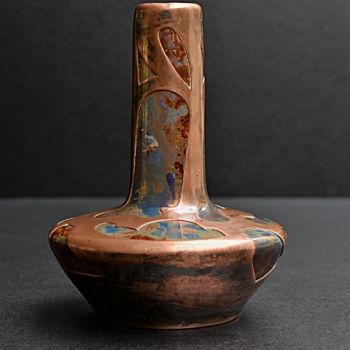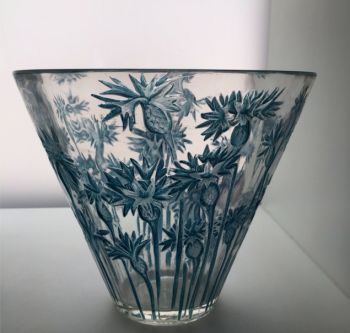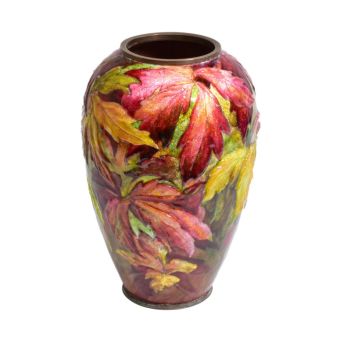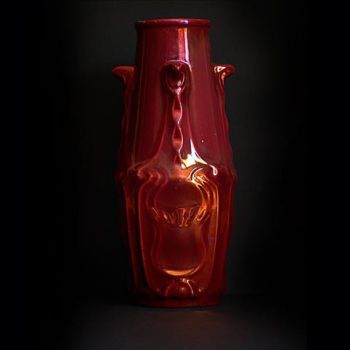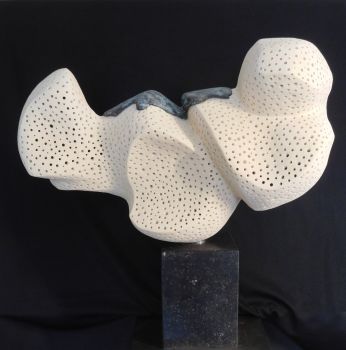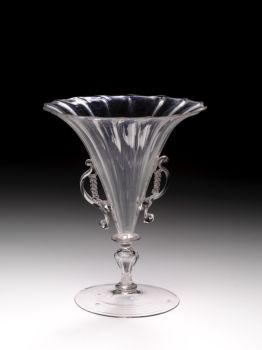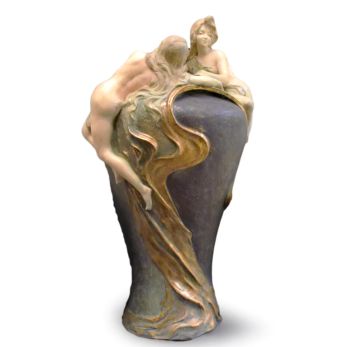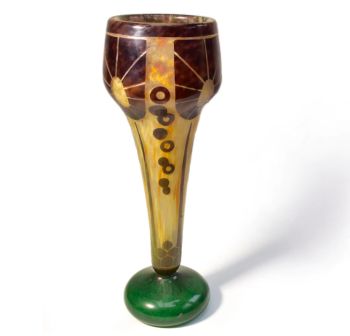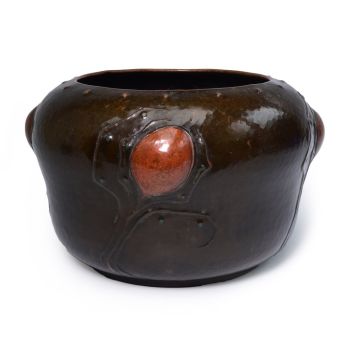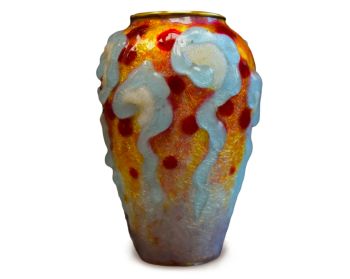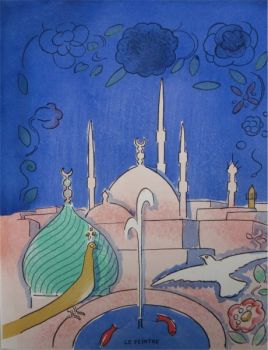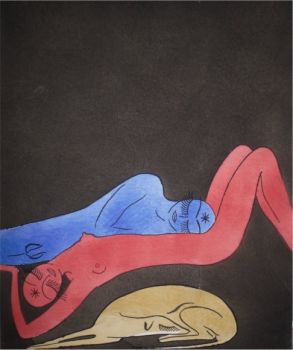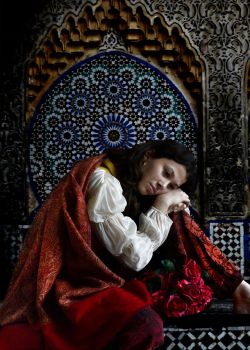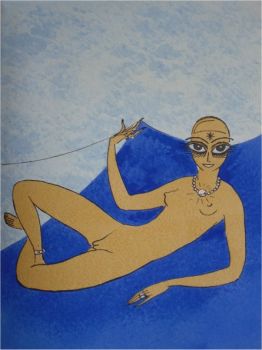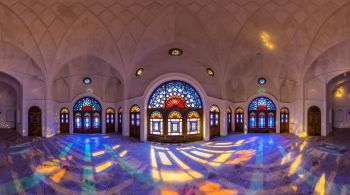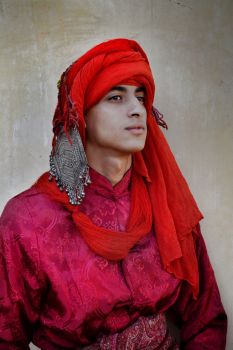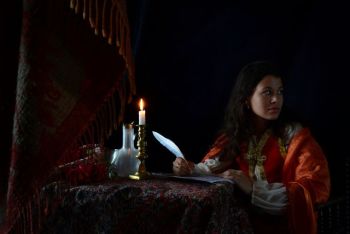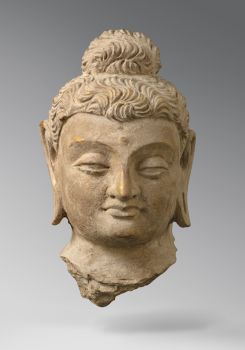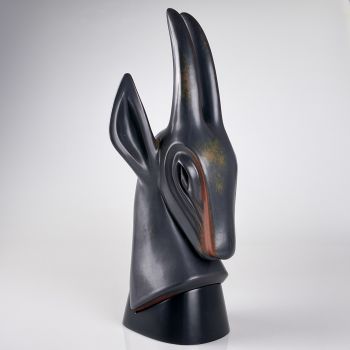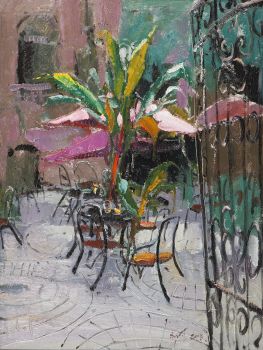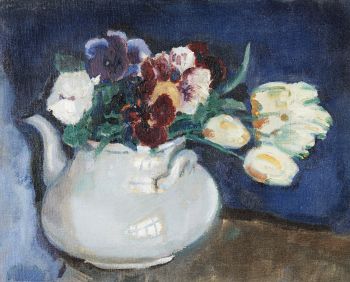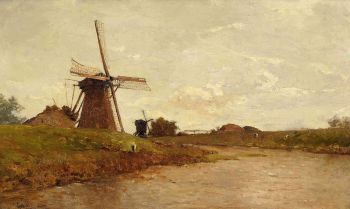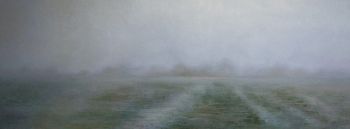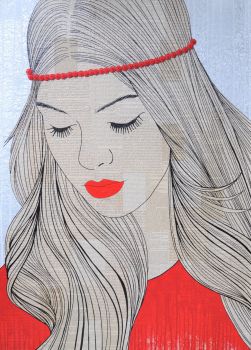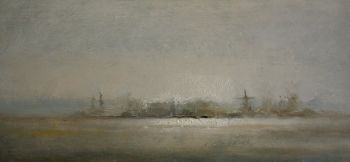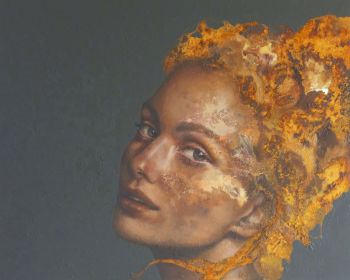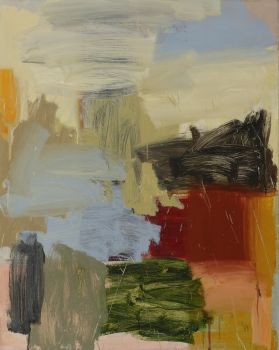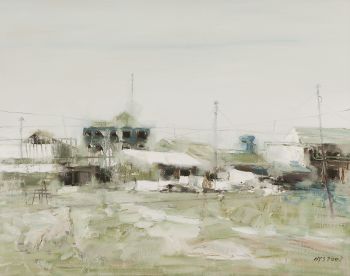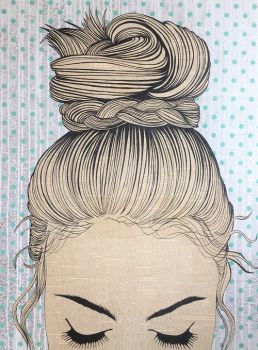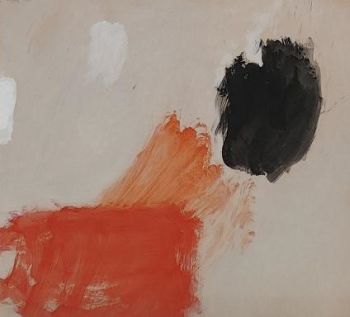Double-gourd Dutch Delft oriental vase, 17th century 1660 - 1680
Artista Desconocido
EsmalteCerámicoLoza de barroPintura
37 cm
ConditionVery good
€ 4.900
Verkoulen Oriental & European Antiques
- Sobre la obra de arteA rare and historically important Delft earthenware double-gourd-shaped vase with Japanese influenced decoration, around 1660-1680, Delft, Holland.
Blue and white
Dimensions: 37,2 cm height.
This rare and historically important Delft earthenware vase has a so called ‘double-gourd’ shape, also known as a ‘húlu (葫芦/葫蘆)’ or ‘bottle gourd (calabash)’. The shape has its origin in ancient Chinese culture. Nevertheless, this vase is copied (or inspired) by the Delft potters quickly after the first lager import arrivals of Japanese (Arita) porcelain in The Netherlands. We can see this type of decoration on the pottery from 1660 on until 1680. All of these Japanese style Delft objects are painted in a soft blue glaze just like the underglaze Arita porcelain examples. They also match closely to the original Japanese decorations. Typical for this Japanese style decorations are the simply painted oriental figures with big round heads, the featherlike pine trees, palmtrees and the symmetrical thick ‘pillars’ that divide the vase in different panels. These elements can also been seen on the vase described. This vase has three different panels divided by dotted cruciform ‘pillars’ against a bleu ground. The 'shoulder part' of the vase has these 'pillars' filled with stiff leaf motifs, that also divide the shoulder in three different panels. The neck has beautiful leaf motifs as well.
Condition: Very good, with two small professional restorations (one vertical to the neck/neck rim and one of two-centimeter glaze loss of the belly.)
Provenance:
-The Dr. Günter Grethe Collection (Dr. Günter Grethe (1919-2005) was a retired notary public from Hamburg, with an impressive collection representing fifty years of connoisseurship and over 150 quality Dutch Delftware objects from the 17th and early 18th century).
-R.D. Aaronson, 2004.
Reference:
This exact vase is published with a description and image in" “D. and R. Aaronson, ‘Dutch Delftware The Dr. Günter Grethe Collection’, 2004, page 11”.
Comparable examples:
-A Delft ovoid jar with the similar decoration appears on a painting by Cornelis de Man (1621-1706), who lived in the Delft city himself.
-A Delft ovoid jar with the similar decoration is illustrated by C.J.A. Jörg in: ‘Oosters porselein, Delft aardewerk - Wisselwerkingen, 1983’, page 128-129.
-A Delft ovoid jar with the similar decoration is in the possession of The Art Institute of Chicago Museum (Reference Number 1944.289). - Sobre el artista
Puede suceder que un artista o creador sea desconocido.
Algunas obras no deben determinarse por quién está hecho o por (un grupo de) artesanos. Algunos ejemplos son estatuas de la Antigüedad, muebles, espejos o firmas que no son claras o legibles, pero también algunas obras no están firmadas en absoluto.
También puedes encontrar la siguiente descripción:
•"Atribuido a …." En su opinión, probablemente una obra del artista, al menos en parte.
•“Estudio de….” o “Taller de” En su opinión, una obra ejecutada en el estudio o taller del artista, posiblemente bajo su supervisión
•“Círculo de…” En su opinión, una obra del período del artista que muestra su influencia, estrechamente asociado con el artista pero no necesariamente su alumno.
•"Estilo de …." o “Seguidor de…”. En su opinión, una obra ejecutada al estilo del artista pero no necesariamente por un alumno; puede ser contemporáneo o casi contemporáneo
•"Manera de …." En su opinión una obra al estilo del artista pero de fecha posterior
•"Después …." En su opinión, una copia (de cualquier fecha) de una obra del artista
•“Firmado…”, “Fechado…” o “Inscrito” En su opinión, la obra ha sido firmada/fechada/inscrita por el artista. La adición de un signo de interrogación indica un elemento de duda.
•“Con firma…”, “Con fecha…”, “Con inscripción…” o “Lleva firma/fecha/inscripción” en su opinión la firma/fecha/inscripción ha sido añadida por alguien que no es el artista
¿Está interesado en comprar esta obra de arte?
Artwork details
Related artworks
- 1 - 4 / 12
René Lalique
Un jarrón temprano 'Bluets' diseñado por Rene Lalique (1860-1945)1910 - 1920
Precio a consultarLennart Booij Fine Art and Rare Items
Artista Desconocido
Vidrio alado veneciano1550 - 1599
Precio a consultarPeter Korf de Gidts - Antiquairs
1 - 4 / 24Artista Desconocido
Una rara filigrana una copa de retortoli1550 - 1600
Precio a consultarPeter Korf de Gidts - Antiquairs
Gyrinus
Vidrio grabado punteado con putti1764 - 1766
Precio a consultarPeter Korf de Gidts - Antiquairs
1 - 4 / 24- 1 - 4 / 24
- 1 - 4 / 5









